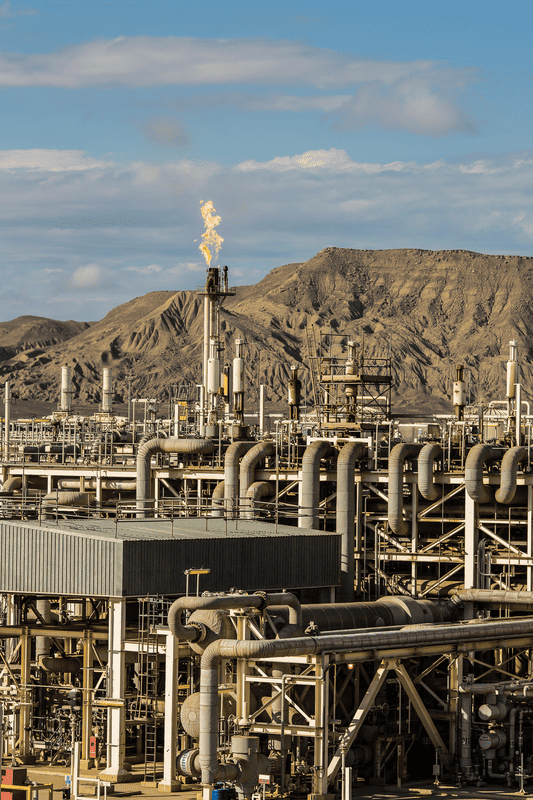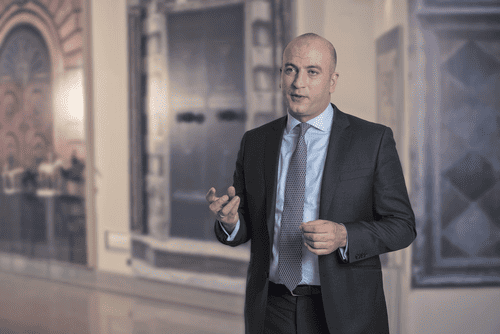New resource-extraction operations, Russia’s economic recovery and Asian investment are lifting prospects across the Caucasus.

Although the ongoing global recovery, stable energy prices and rising investor confidence have buoyed most developing markets, the turnaround in Azerbaijan, Armenia and Georgia has perhaps been the most remarkable. Last year, Global Finance worried that all three South Caucasus countries would suffer, with Russia’s downturn weighing especially on Armenia, and worsening tensions in Turkey impacting trading partners Georgia and Azerbaijan. Investors were further spooked by concerns that the conflict in the disputed Nagorno-Karabakh territory could reduce the region to chaos.
Russia’s economy has recovered from recession, with GDP growth of around 1.8% in 2017 and 1.6% this year, yet none of those negatives have gone away. Armenia’s border with Turkey, which could be a key economic partner for Yerevan, has remained shuttered since 1993. Still, these Caucasian economies continue to expand. The International Monetary Fund (IMF) pegs 2018 GDP growth for Georgia at 4.2%, Armenia at 2.9% and Azerbaijan at 1.3%.
“Growth has returned, with almost all last year’s numbers well above expectations,” says Konstantine Kintsurashvili, Caucasus economist at the European Bank for Reconstruction and Development (EBRD). “Georgia saw exports rise 29%, tourism 30% and remittances 20%. Armenia saw remittances—here really important—jump 19% and exports 24%, leading to growth maybe reaching 6%. Even Azerbaijan, which has been running behind because of its heavy dependence on oil, managed to escape recession with growth around 1%.”
Investors have become used to the vicissitudes of the region, according to Paul Gamble, head of emerging Europe sovereign ratings at Fitch Ratings.“Over the past six months, we’ve seen greater macroeconomic stability, growth pick up and the impact of Russia’s economic crisis on the regionease,” he says.
The country with the most to be pleased about is Georgia, which sees itself as the region’s transportation and business hub. Georgia enjoys good relations with both of its South Caucasus neighbors; and with by far the most diversified economy, it is reaping the benefits of reforms initiated by former president Mikheil Saakashvilli and continued under the Georgian Dream coalition. Last October, Georgia rose seven places to ninth place among 190 countries in the World Bank’s ranking on ease of doing business. Foreign direct investment has been on the rise over the past two years. Roughly $1.5 billion last year, or about 12% of GDP, went into mining, transport, hydropower, tourism, construction and other industrial sectors.
The IMF approved in 2017 a $285.3 million, three-year program to support Tbilisi’s economic reforms. This has reinforced investor confidence.
“The program amount is notverylarge but it provides a policy anchor for the government’s ongoing reform efforts, says Alex Muscatelli,director inFitch’ssovereign team.”The first review last Decembersuggested things were very much on track.”
“The program amount is notverylarge but it provides a policy anchor for the government’s ongoing reform efforts: the first reviewlast Decembersuggested things were very much on track,” says Alex Muscatelli,director inFitch’ssovereign team.
As Georgia diversifies, China is emerging as a key trade partner, placing after Turkey and Azerbaijan, and actually ahead of Russia. As part of China’s ambitious One Belt, One Road initiative to expand its global reach, Beijing is interested in such infrastructure projects as Georgia’s main east-west highway and the deep-sea port of Anaklia. Meanwhile, the South Korean government is the key investor in Georgia’s Nenskra hydropower project, which is designed to reduce winter energy imports and create electricity export potential when complete in 2021.
Observers say a new wave of fiscal reforms will further bolster the country’s appeal and long-term growth potential. “Pension reform will promote savings and capital market development, which is expected to transform Georgia into the financial hub for the region,” says Eva Bochorishvili, chief economist at local investment firm Galt & Taggart. Amended tax rules exempt personal and corporate income taxes owed on capital gains from debt and equity securities, and on interest income from debt securities, which should encourage investment, she adds.

“Georgia, which enjoys free-trade agreements with the EU, Turkey and the Commonwealth of Independent States and, since the start of the year, with China too, is in a very unique position,” says Giorgi Shagidze, deputy CEO and CFO of Georgia-based TBC Bank. “This growing integration has huge upside potential for us.”
Rising trade opportunities and digitization are boosting opportunities for Georgia’s financial sector. Insurance is in its infancy in the region and particularly in Azerbaijan, which TBC sees as a promising market.
Weak oil prices made for some difficult years for the hydrocarbon-dependent Azerbaijan economy. The restructuring of the International Bank of Azerbaijan is ongoing; it accounts for 40% of the sector. But with oil-price stability, and the non-oil economy showing growth, the banking sector is recovering.
State coffers reflect the turn. Azerbaijan’s current account showed a surplus of around 3.1% for the year. The Southern Gas Corridor energy pipeline projects are under construction to transport natural gas from the Shah Deniz field in the Caspian Sea through Azerbaijan and Georgia to Turkey, Greece and Europe. Azerbaijan’s gas export ability could triple. In February, Fitch affirmed Azerbaijan’s sovereign rating at BB+ but upgraded its outlook to stable.
Azeri authorities must make sure “that the non-energy sector, which has been crowded out by oil and gas, continues to grow,” says the EBRD’s Kintsurashvili. A spokesman for Kapital Bank, one of Azerbaijan’s largest, noted that in 2017, private investment in non-oil sectors was up double digits, mostly in agriculture, manufacturing, real estate, and tourism.
Even Armenia—the poorest of the three economies—had a surprisingly good year, with record remittance inflows and strong export and construction growth helping push real GDP growth expectations higher. “We had expected fiscal consolidation to hit growth, but buoyant export performance offset much of this impact,” says Erich Arispe, a sovereign-risk director at Fitch Ratings. He points to retail, agriculture and tourism as potentialmajor new-growth areas, with the authorities seeking to imitate Georgia by boosting Armenia’s appeal to Western visitors. Although further consolidation in the bank sector ispossible,all banks were able to meet the new minimum capital requirements of around $60 million when these were introduced in January 2017.
Armenia’s role as a major natural-resource exporter of minerals will be boosted by the Amulsar gold project, planned to commence production in the third quarter. The mine—run by Toronto-listed Lydian International, which also runs the Kela gold mine in Georgia—could add $250 million to annual exports, according to a company presentation.
Assuming geopolitical stability reigns, corruption investigations are not disruptive and the economies of trading partners remain sound, the outlook for the South Caucasus appears positive, certainly by past standards. Especially in Georgia, reform is bearing fruit. “Many are expecting 2018 to be even better,” says TBC Bank’s Shagidze.



